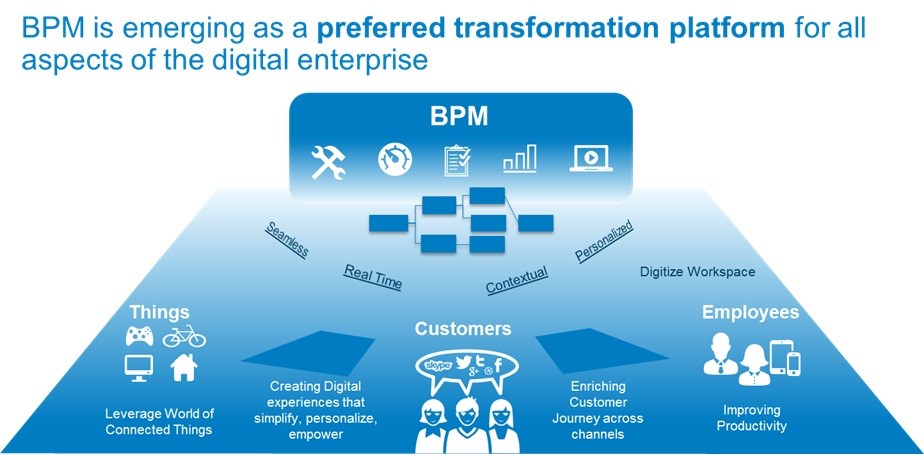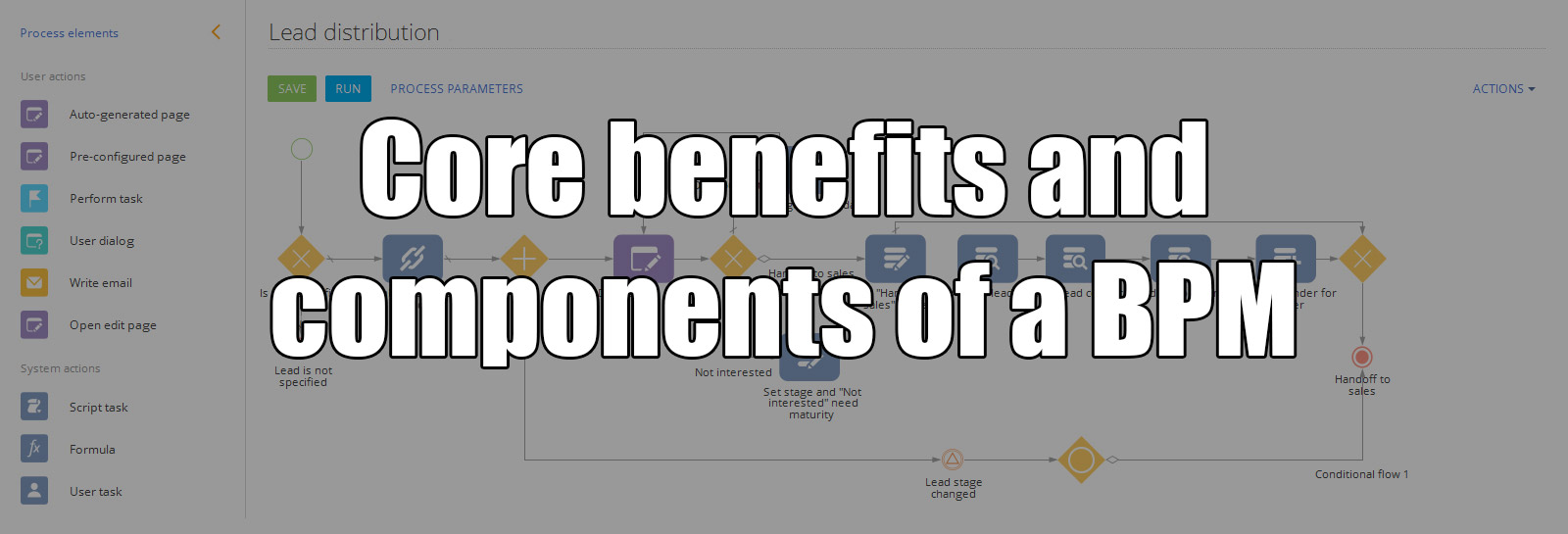
The concept of business process management fits large and small corporations. Its essence is to consider business processes as assets that can be used to increase the profitability of your business. There is a class of tools that are specifically designed to transform your business – bpm platform. The challenge for such a platform is twofold: on one hand it is necessary to visualize a business process, and on the other hand, to perform it.

A good example of this platform is https://www.bpmonline.com/bpm-software that is described in detail at the link https://www.bpmonline.com/bpm-software. Applications on the bpm’online platform provide a complete set of tools to manage business processes in your company including planning, execution, monitoring and analysis of business processes. The usage of bpm’online allows for significantly reducing costs thanks to the flexibility of the system that ensures the constant changes in the company. Learn more also about bpm’online CRM by following the link https://www.bpmonline.com/crm.
What are the main goals of BPM platform?
Among the basic objectives of a business process management platform are:
- To quickly design or change workflows and business processes;
- to create application for the dynamic development of your business;
- to improve the cooperation level between business and IT;
- to organize effective cooperation between employees from different departments;
- to coordinate and monitor the company activities;
- to communicate with the workforce through mobile gadgets;
- to monitor key performance indicators in real time;
- the possibility to resolve issues promptly in real time.
BPM is designed to model the business processes of the company and simultaneously automate the activities of people participating in the process. In addition, a BPM system allows for analyzing and optimizing the running processes on the basis of data obtained in the course of a process.
Key advantages of BPM platforms
The platform provides the ability to integrate external systems and software to support unified business processes, use a single application for the entire life cycle of business processes and the automation of participants’ activity of the process. There are also other benefits to consider:
- the implementation of a bpm platform allows you to increase the efficiency of your company;
- you can constantly monitor all processes in your organization that improves transparency;
- the optimization of workforce management;
- measure the productivity of changes in business processes;
- increasing the coherence and quality of staff’s work;
- optimization and standardization of the processes allows for reducing the costs;
- BPM software helps to instantly respond to constantly changing business conditions;
- make necessary adjustments and quickly develop new applications;
- make your business more flexible.
The use of BPM platform tools for business management tremendously increase efficiency of modern business. Application development on BPM platform allows you:
- quickly and with minimal investment to start the bpm systems to work;
- implement any changes due to the open configuration;
- easily integrate applications with other existing systems.
The presence of such platforms also helps to eliminate the loss of information and receive accurate data for analysis and optimization.

Core components of BPM platforms
Such platforms should include the following basic components:
- process designer. It is used to create a process model, which defines the sequence of operations and data streams, assigns roles to participants in the process, introduces routing rules and exception handling, creates electronic forms used by process participants to perform the tasks manually, as well as the integration of automated business systems. The designer allows for constructing the model in a graphical diagram that specifies the flow of operations, with the detailed description of this model in the form of the individual steps, sub-processes or a process as a whole. The process designer is the tool for process developers, business analysts, but not the programmers, so it must ensure changes in business process by a simple modification of the graphical chart and set properties;
- process engine. The runtime environment of the process is created and approved by the designer of the process. The execution engine monitors the state of the process at each moment and ensures the sequence of operations of the process specified in its graphical models. To perform the operations manually the participants of the process get the notification of their assigned tasks through the work list;
- activity monitor. It tracks the status of each operation of the process, analyses the performance and conducts an audit history of the process. This information allows you to explore the possibilities of improving individual operations and productivity of the overall process. The data source for the monitor operations is the store that is updated by the information about the status and history of each process during its execution;
- user interface – access to business process management system tools during the process operation.
The use of business process management software allows you to achieve many advantages when planning and implementing business processes. It provides an opportunity to increase the speed of execution of the processes, improve their quality and organize management in terms of the indicators, which significantly facilitates the analysis and improvement of a business process. In addition, modeling and restructuring allows the company to be more flexible. All these factors make bpm platforms very popular among users.







